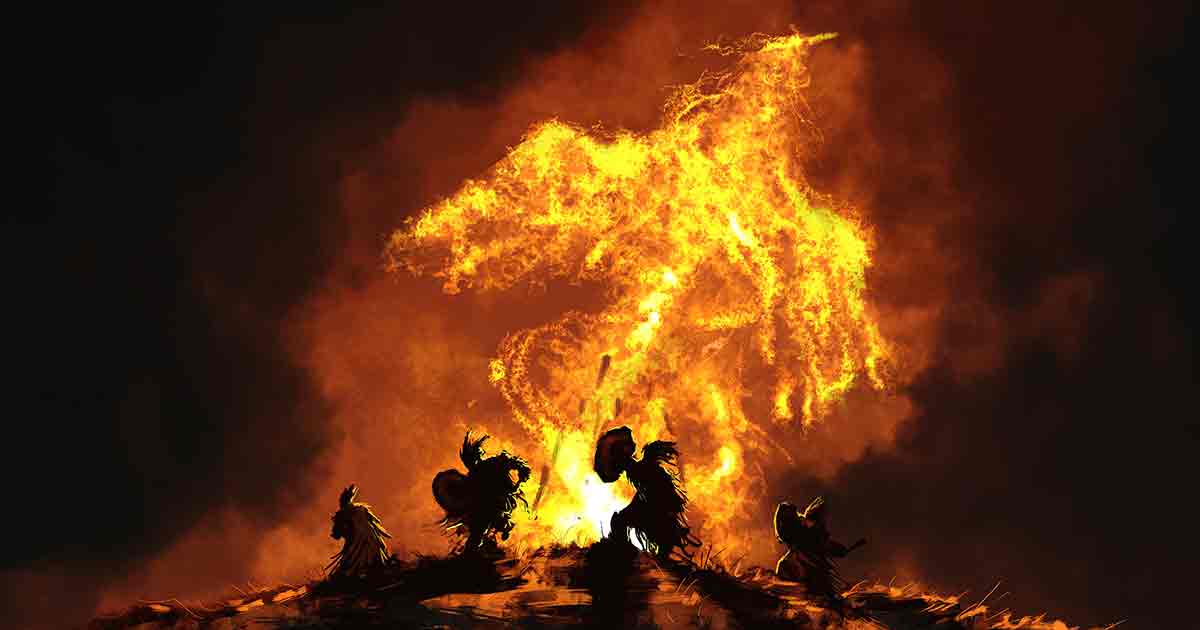The Peaceful Ghost Dance Movement Was Misconstrued as a Threat
Throughout history, governments have continually feared and misrepresented peaceful resistance movements, none more tragically than the misinterpretation of the Ghost Dance Movement by the United States government in the late 1800s.
Amid the tumult of Westward expansion and cultural assimilation in North America, the Ghost Dance Movement emerged as a beacon of hope for Native American tribes, including the Sioux. Originating among the Paiute people of Nevada in the 1870s, it quickly gained momentum, spreading to tribes across the Great Plains and beyond.
Wovoka's Vision and the Birth of the Ghost Dance Movement
The movement emphasized communal rituals of dance and prayer, offering solace in the face of adversity. The Ghost Dance Movement was founded by a Paiute spiritual leader by the name of Wovoka, also known as Jack Wilson. Born around 1856 in Nevada, he experienced a transformative vision during a solar eclipse in 1889, in which he claimed to have received a message from the divine.
Styling himself as a new messiah, Wovoka preached a message of pacifism, spiritual renewal and prophesied the imminent restoration of Native American lands and their way of life. His teachings inspired the widespread adoption of the Ghost Dance among indigenous tribes across North America in the late 1800s.
The Ghost Dance Movement was rooted in ancient indigenous beliefs, drawing inspiration from visions and prophecies foretelling a time of restoration. Participants believed that through their collective prayers and movements, they could hasten the arrival of this new era, known as the “Day of the Great Spirit.” Central to the movement was the belief in communication with ancestors and spirits, facilitated through trance-like states induced by rhythmic dancing and chanting.
- The Reog Ponorogo: A Dance of Rebellion Which Changed History
- The Stories Behind Seven of the Worst Massacres in Ancient History

The Ghost Dance by J. Steeple Davis. (Public domain)
How Fear and Prejudice Shaped the Response to the Ghost Dance Movement
Despite its peaceful intentions, the Ghost Dance Movement sparked fear and suspicion among settlers and officials in the throes of implementing assimilation policies. Interpreting the communal gatherings as a prelude to rebellion, the US government viewed the movement as a threat to its authority and the stability of the region. This was fueled by longstanding tensions and the prevailing attitudes of racial superiority, leading to a tragic escalation of violence.
The misrepresentation culminated in the tragedy of Wounded Knee in 1890. Fearing a Native American uprising, US troops confronted a group of Lakota Sioux performing the Ghost Dance. In the ensuing chaos, hundreds of unarmed men, women, and children were massacred, marking a dark chapter in American history.
The Wounded Knee Massacre underscores the urgent need for empathy and the consequences of cultural prejudice, serving as a stark reminder of the impacts of cultural misunderstanding. Regrettably, it appears that vital lessons from history in relation to peaceful protest remain unheeded, perpetuating cycles of conflict and division.
Top image: Representational image of a Native American dance. Source: Iobard / Adobe Stock


















Comments
Incompetence is such a good excuse. Mistskes were made. Tragic, but understandable...
Or maybe not. Government misrepresentation of a peaceful movement of resistance is, more often than not, a deliberate policy. Conspiracy trumps incompetence in the annals of Government over-reach. Incompetence, often encouraged, is a useful smokescreen for conspiracy.
By blaming cultural misunderstanding, one can pass the blame onto ordinary folk even, as it turns out, to ones alive over a century later.